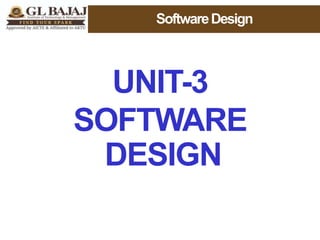The document discusses the principles of software design, emphasizing that a good design is critical for successful software development. It outlines key characteristics of effective design, including correctness, understandability, efficiency, and maintainability, while contrasting good design with bad design on various attributes. The text also explains the concepts of coupling and cohesion, highlighting their impact on module independence and overall system stability.























































